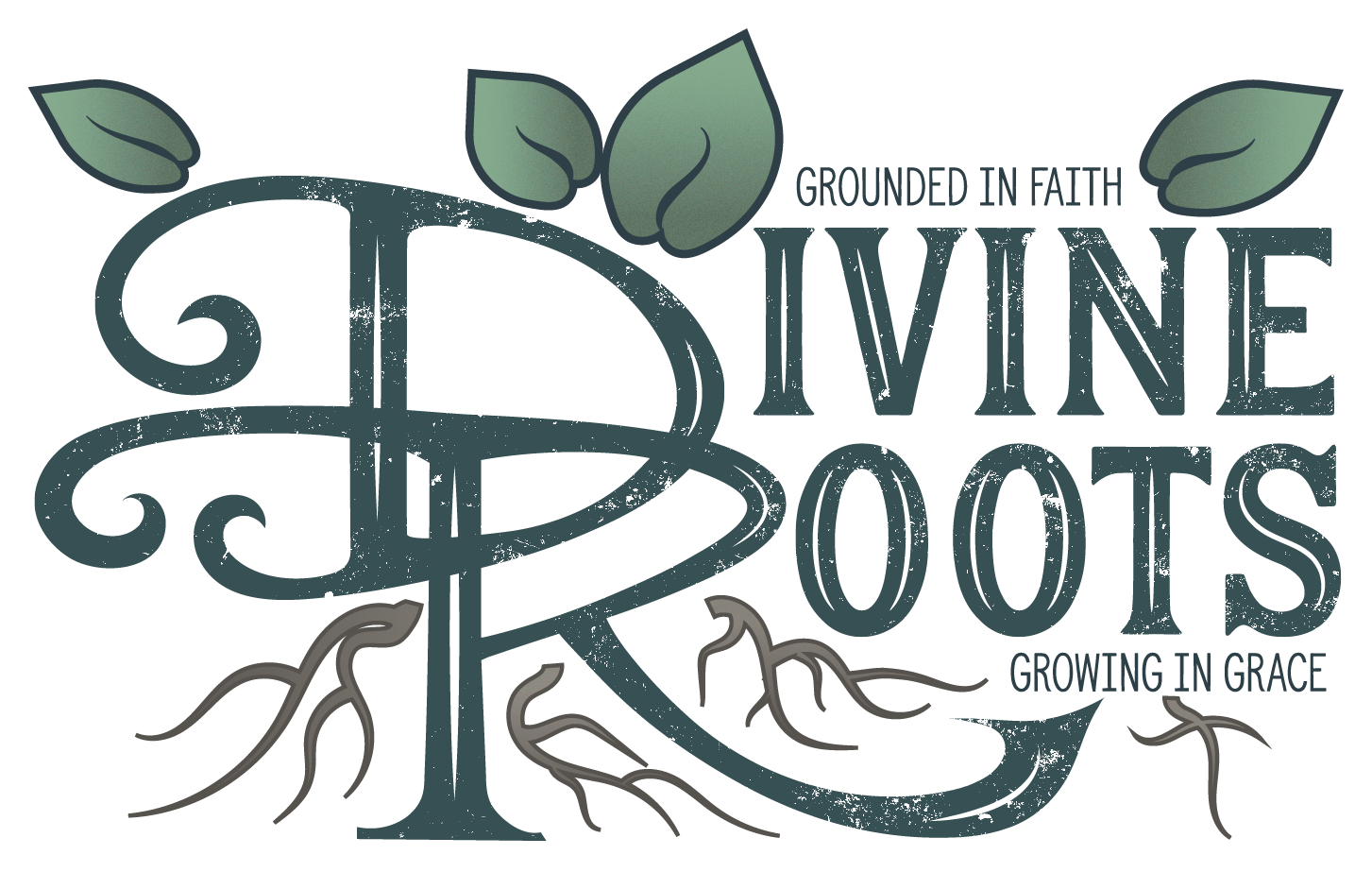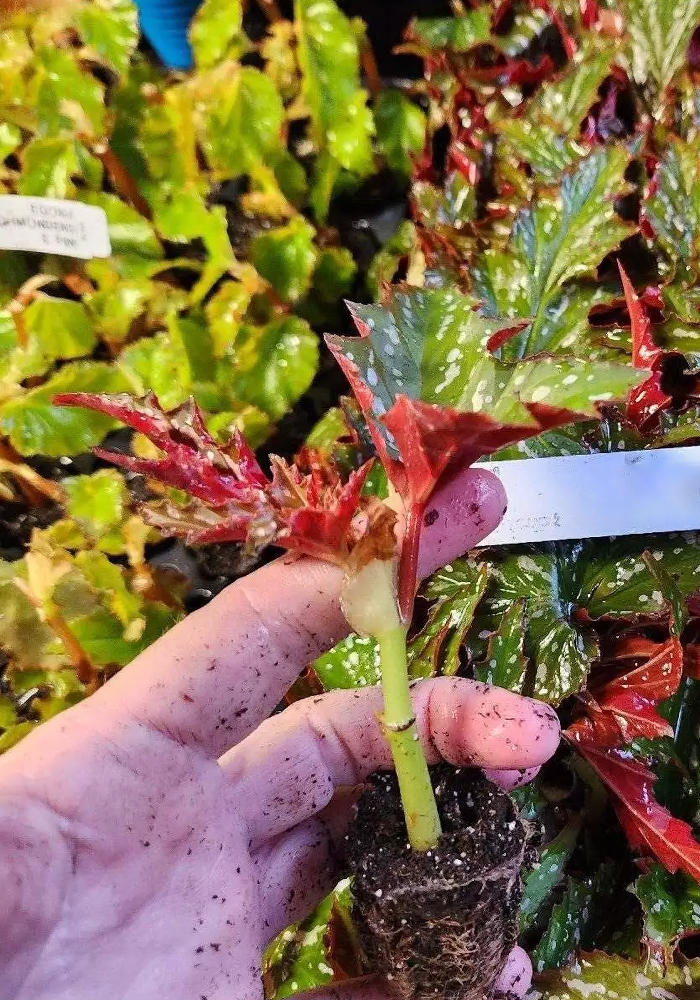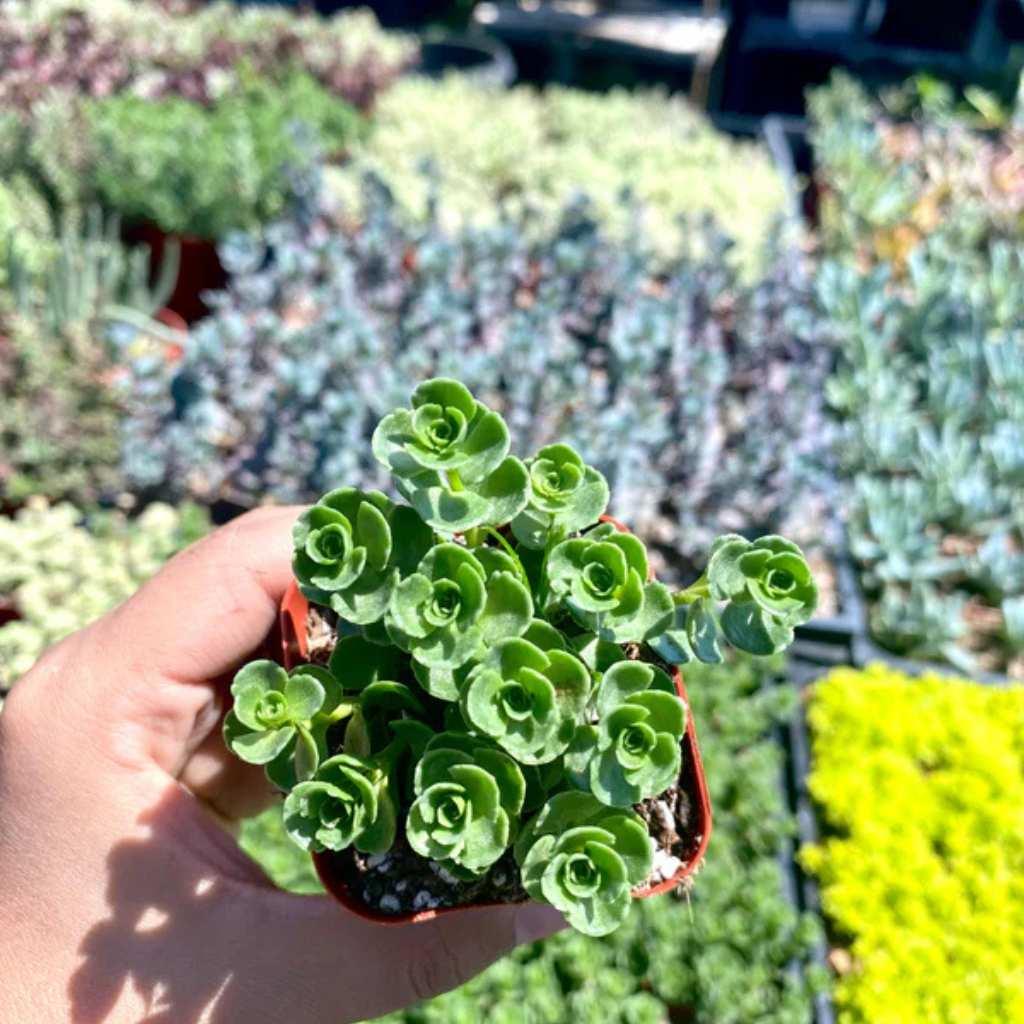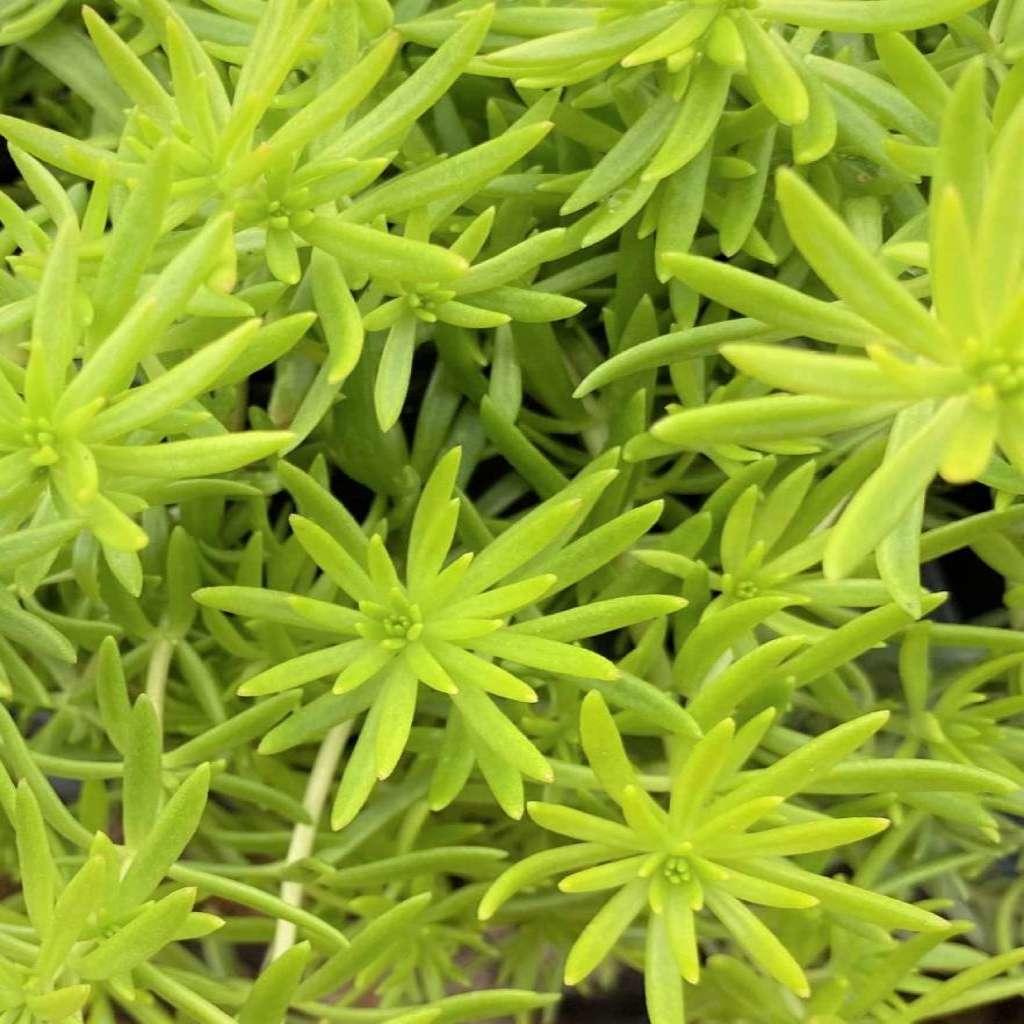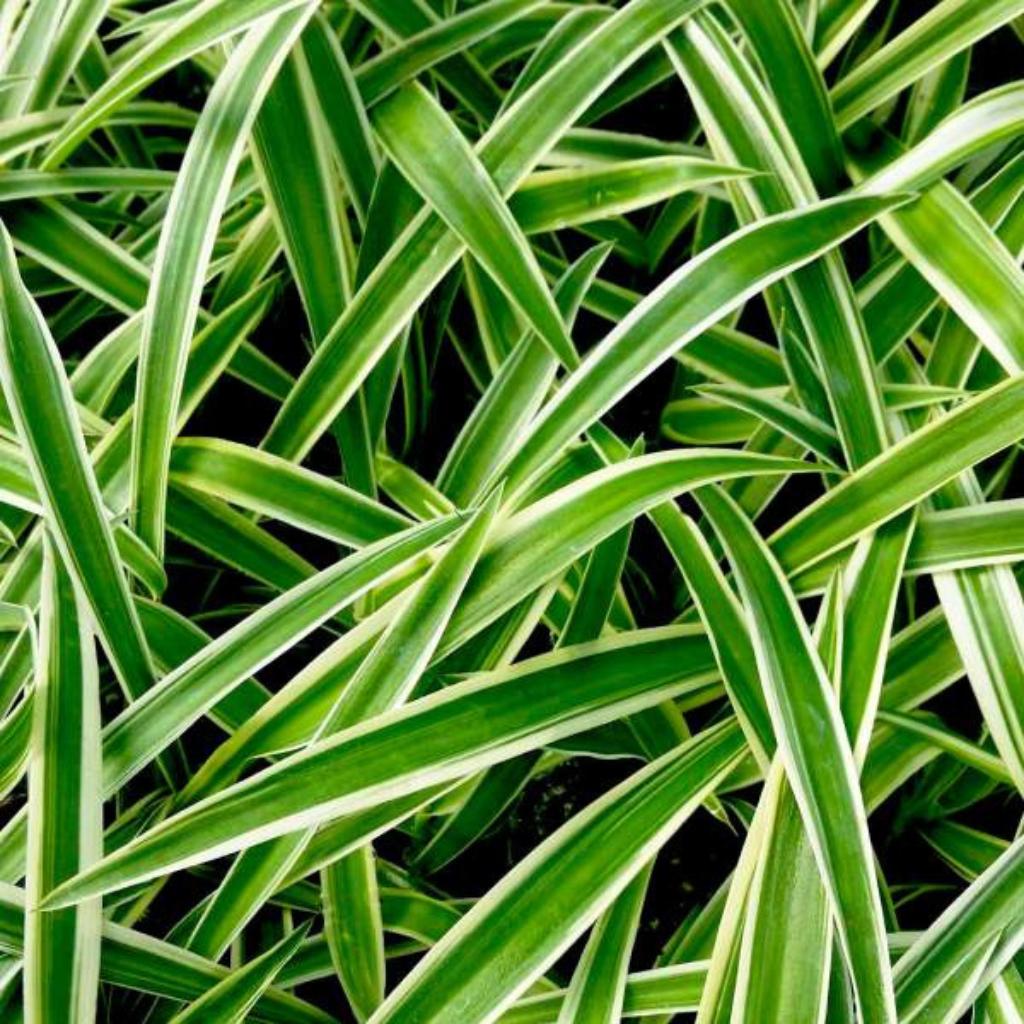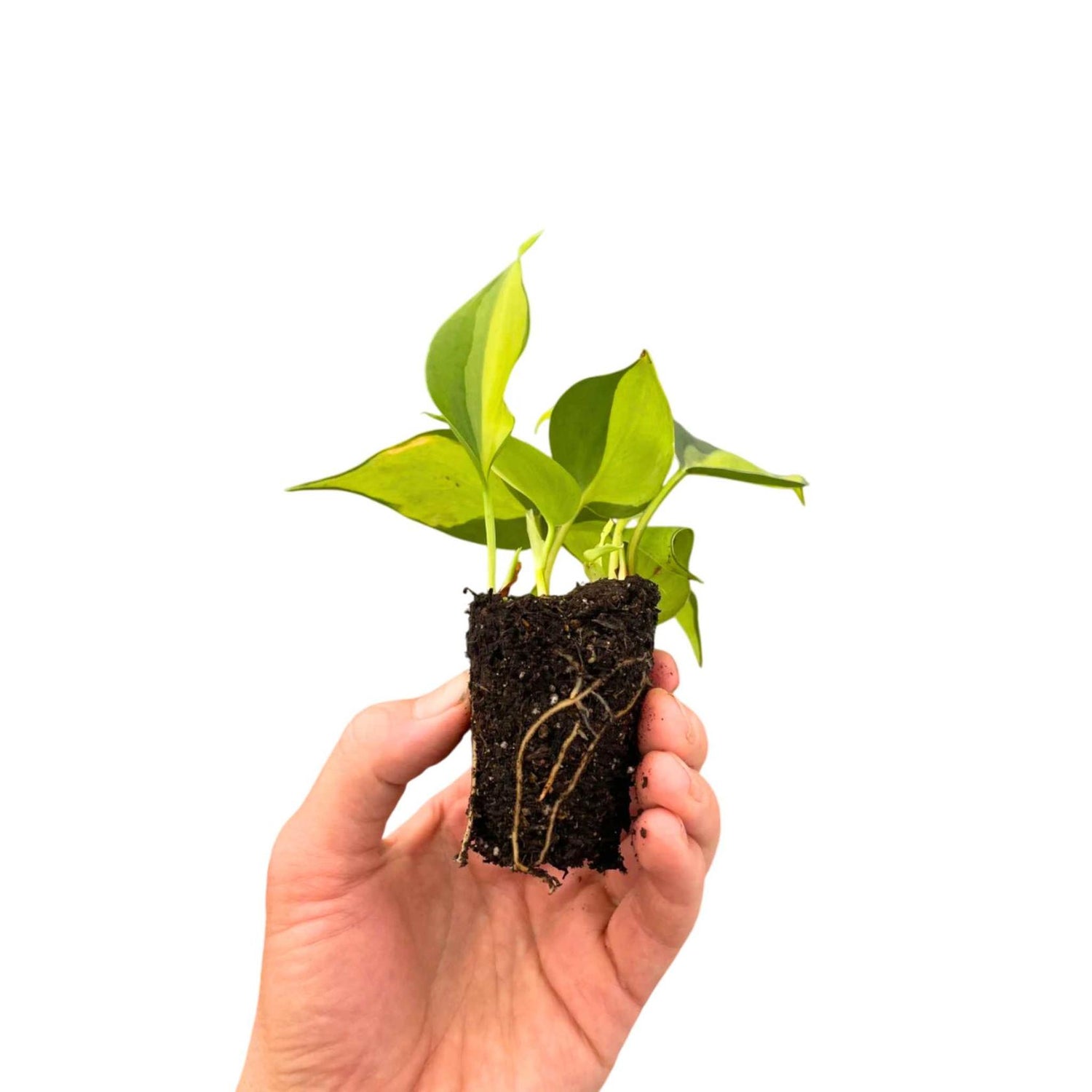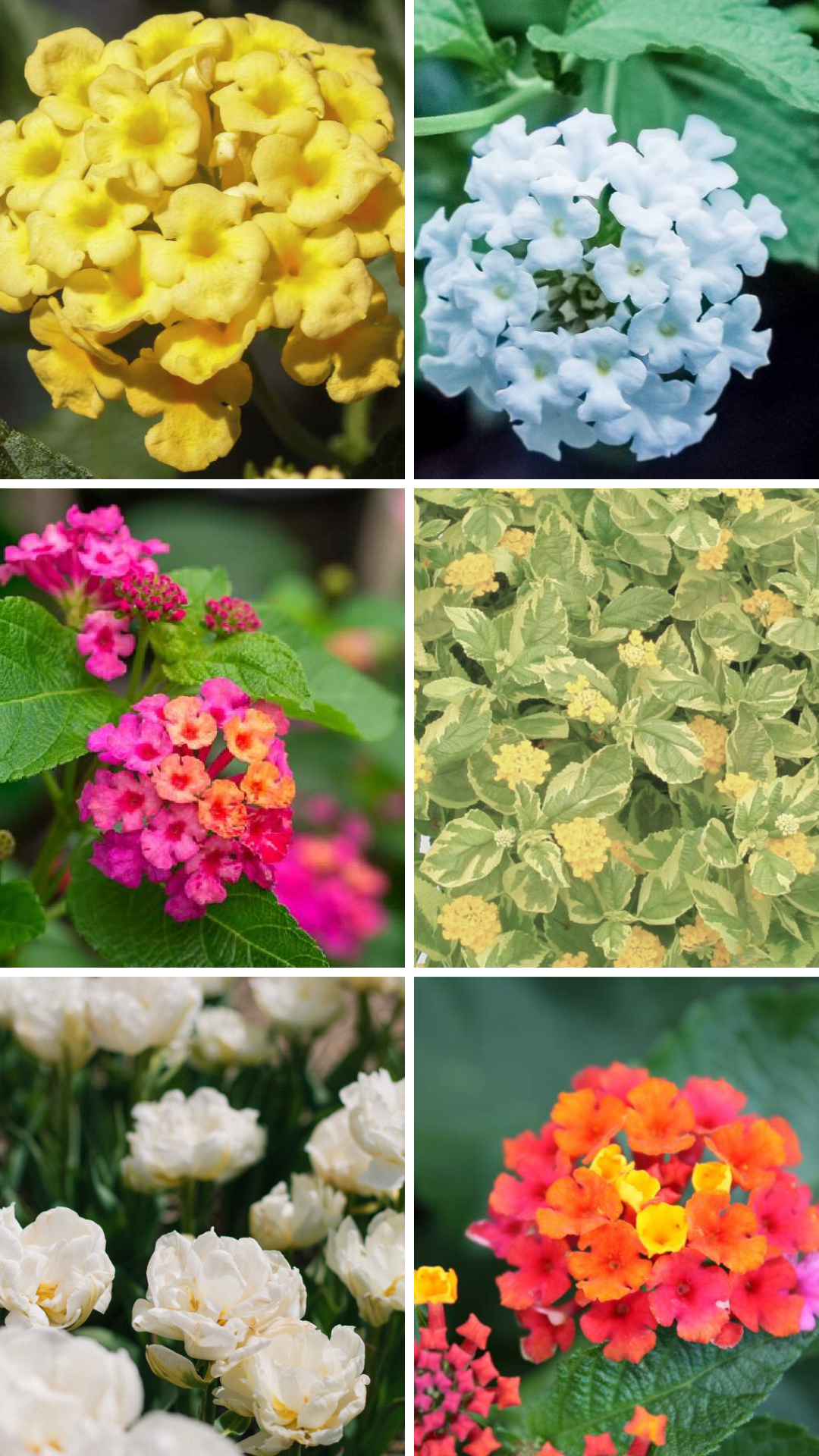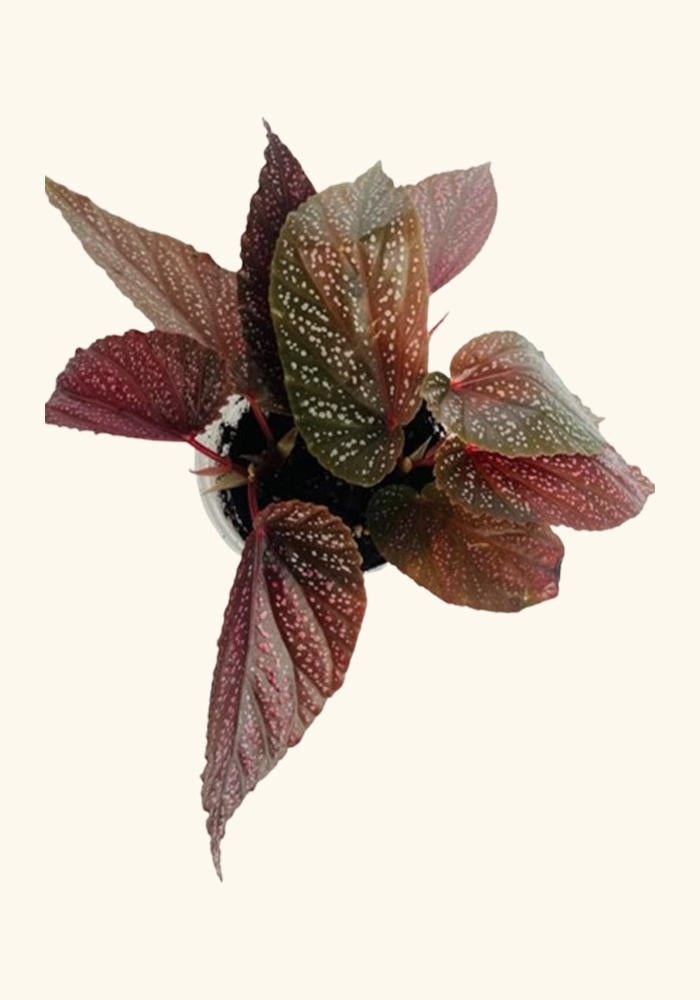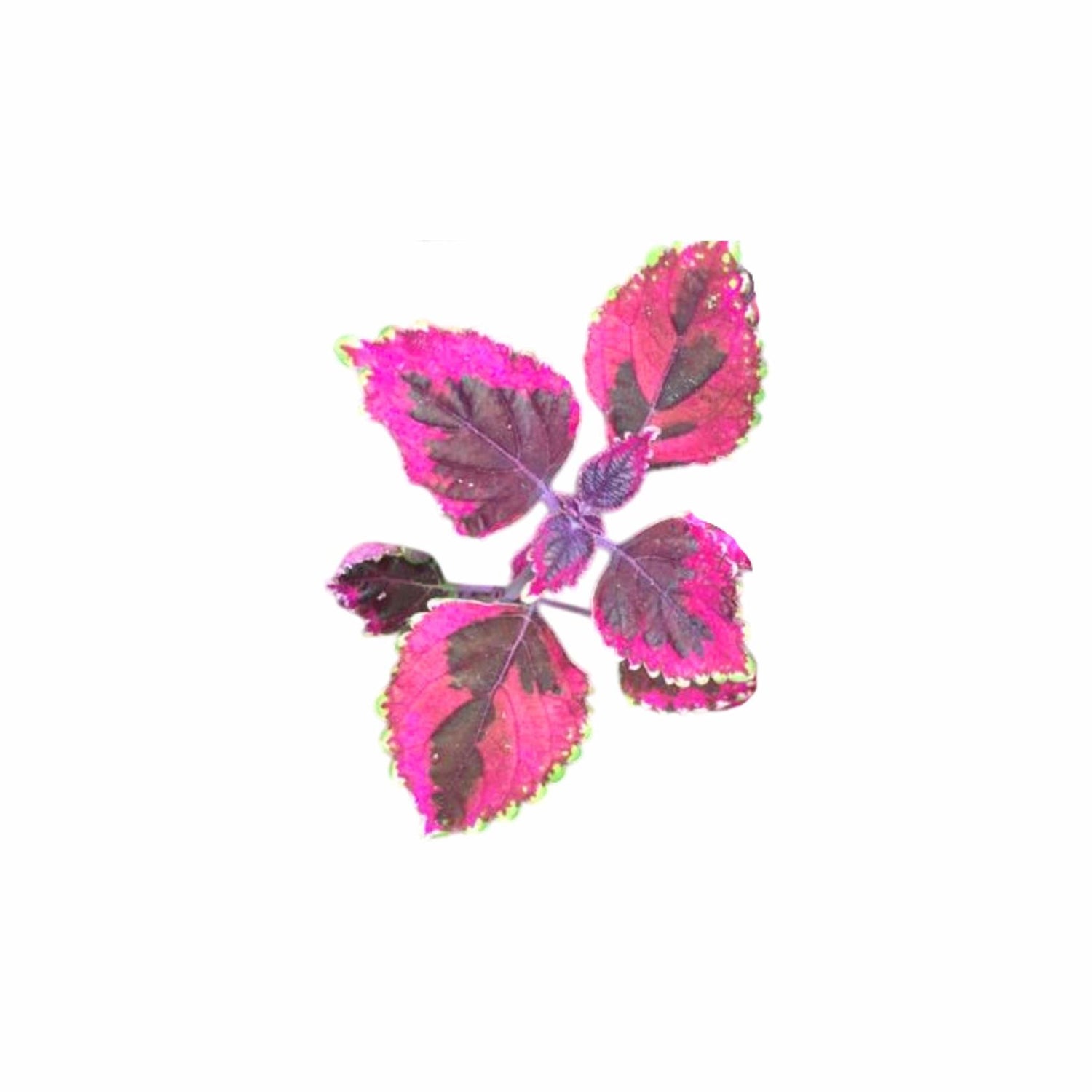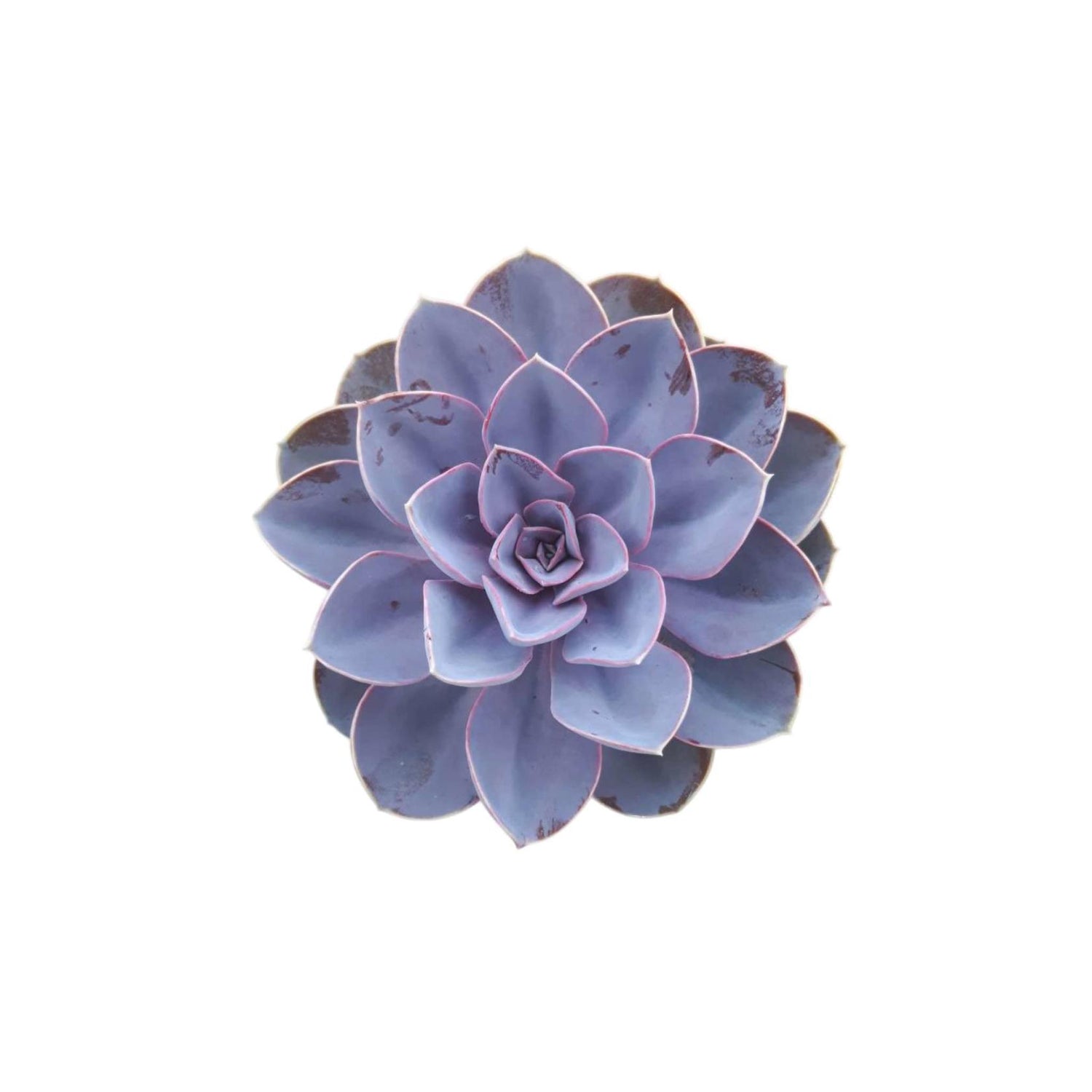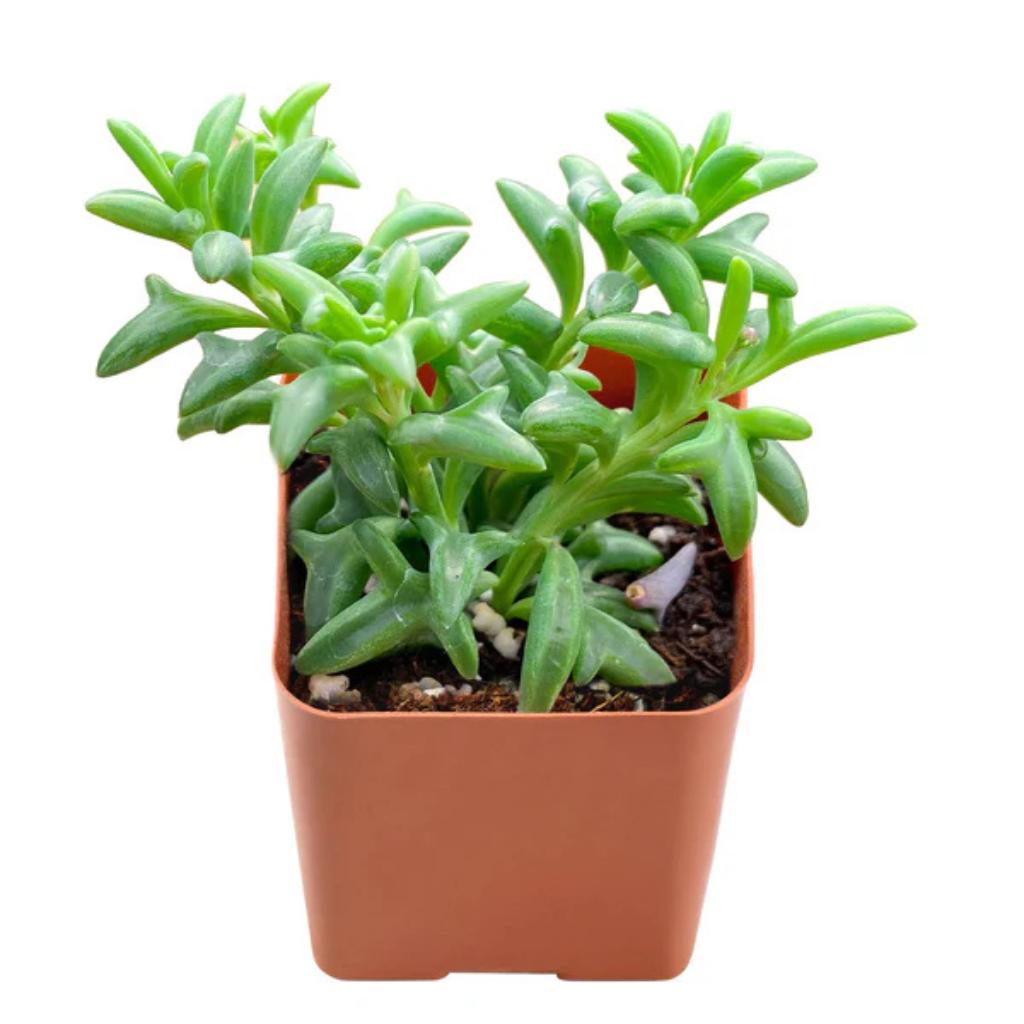Sort by:
71 products
71 products
The Angel Wing Begonia (Begonia coccinea), specifically the Sophia variety, is a stunning houseplant known for its unique, striking foliage and elegant blooms. With its large, angular leaves, this begonia features an eye-catching silver-gray pattern with a slight touch of green, giving it a graceful, almost shimmering effect. The plant's beautiful, bright red flowers contrast beautifully against its leaves, making it a perfect addition to any indoor space.
Native to tropical regions, the Angel Wing Begonia thrives in environments with moderate humidity, and it’s well-suited to homes with bright, indirect light. The Sophia variety of this popular begonia is especially appreciated for its compact size and its ability to bring a touch of nature's beauty into your home without taking up too much space.
The Angel Wing Begonia Sophia is an ideal plant for those who want to add a touch of sophistication and color to their home. It’s a low-maintenance, easy-to-care-for plant that also purifies the air, making it a perfect choice for your living room, office, or bedroom. Whether you're new to gardening or an experienced plant enthusiast, this beauty is sure to impress.
Angel Wing Begonia Sophia: Benefits
- Striking Foliage: Silver and green patterned leaves that shimmer in the light.
- Bright Flowers: Stunning red flowers add a vibrant pop of color to your indoor garden.
- Air-Purifier: Helps improve indoor air quality.
- Low-Maintenance: Great for beginners or those with busy schedules.
- Compact Size: Perfect for smaller spaces.
Angel Wing Begonia Sophia: Care Guide
Caring for your Angel Wing Begonia Sophia is easy with just a few simple steps to keep it healthy and thriving:
Watering
Water your Angel Wing Begonia when the top inch of soil feels dry to the touch. Ensure the plant has well-draining soil to avoid root rot. Use room temperature water and allow the excess to drain out. Be careful not to overwater, as this plant prefers to be on the slightly drier side.
Light and Temperature
Place your begonia in bright, indirect light. Direct sunlight can scorch the leaves, so keep it out of harsh afternoon sun. The plant grows best in temperatures between 60°F to 75°F, making it ideal for indoor environments.
Humidity
The Angel Wing Begonia enjoys humidity, so it will thrive in a room with moderate humidity. If your home is dry, consider placing a humidity tray under the plant or misting the leaves occasionally.
Soil and Repotting
This plant prefers a well-draining potting mix, such as a peat-based mix. Repot your begonia once every couple of years to provide fresh soil and allow it to grow to its fullest potential. Choose a pot that is slightly larger than the current one and ensure it has proper drainage.
Fertilizing
Feed your Angel Wing Begonia Sophia once a month with a balanced liquid fertilizer diluted to half strength during the growing season (spring and summer). Cut back on fertilizing during the fall and winter when the plant’s growth slows down.
Pruning and Cleaning
Remove dead or yellowing leaves to encourage new growth and keep the plant looking tidy. Clean the leaves regularly with a soft, damp cloth to remove dust and let the plant’s natural beauty shine.
Common Issues
The Angel Wing Begonia is relatively trouble-free, but it may experience problems with overwatering or too much direct sunlight. Watch out for pests like aphids or spider mites, which can sometimes target this plant.
Angel Wing Begonia Sophia: Placement, Companion & Alternative Plants
Best Locations & Uses
- Ideal for Beginners: Easy to care for and suitable for all levels of gardeners.
- Perfect for Homes and Offices: Adds a touch of elegance and improves air quality.
- Great for Smaller Spaces: Its compact size makes it a perfect fit for windowsills, desks, or side tables.
Companion Plants
If you're looking to create a vibrant, lush indoor jungle, consider pairing your Angel Wing Begonia with plants that share similar care needs:
- African Violet (Saintpaulia): A low-maintenance plant with soft, fuzzy leaves and colorful blooms that complement the begonia’s appearance.
- Spider Plant (Chlorophytum comosum): Known for its air-purifying qualities and easy care, this plant adds a lively touch to any indoor garden.
- Snake Plant (Sansevieria): A hardy, easy-care plant that thrives in indirect light and makes a great contrast with the begonia’s softer foliage.
Alternative Plants
If you're considering adding a different plant to your collection, here are some similar alternatives that provide stunning foliage and vibrant blooms
- Begonia Rex: Known for its colorful foliage with striking patterns, perfect for adding texture to your plant collection.
- Coleus (Solenostemon scutellarioides): Features vibrant foliage and is easy to care for, making it a great choice for beginners.
- Caladium: A tropical plant with large, colorful leaves that make an excellent focal point in any room.
Add an Angel Wing Begonia Sophia to Your Collection!
With its stunning foliage, vibrant flowers, and easy care, the Angel Wing Begonia Sophia is the perfect addition to your home or office. It’s more than just a pretty plant—it’s an air-purifying beauty that will bring life to your space. Shop now to welcome this gorgeous begonia into your home!
Sedum Spurium John Creech Rooted Starter Plant is a young, pre-rooted specimen of Sedum spurium John Creech, a hardy, fast-spreading succulent in the Crassulaceae family. Native to the rocky slopes of the Caucasus, this cultivar forms dense, evergreen mats of tiny, scalloped green leaves with a slightly reddish tinge in full sun. In mid-to-late summer, it bursts with clusters of star-shaped pink flowers that attract bees and butterflies. The rooted starter is acclimated for easy transplanting, ensuring rapid establishment. Mature plants grow 2-4 inches talland spread vigorously, making them ideal for ground cover, rock gardens, or erosion control.
Sedum Spurium John Creech Rooted Starter: Benefits
- Quick establishment: Pre-rooted for minimal transplant shock and rapid growth.
- Drought-tolerant: Thrives in dry, poor soils with infrequent watering.
- Ground cover: Forms a dense, weed-suppressing carpet year-round.
- Pollinator-friendly: Pink summer blooms attract bees and butterflies.
- Low maintenance: No fertilizing or pruning needed once established.
Sedum Spurium John Creech Rooted Starter Care Guide
Light and Water
- Light: Full sun (6+ hours daily) enhances foliage color and flowering. Tolerates partial shade but may grow less densely.
- Water: Water sparingly only during extended dry spells. Overwatering risks root rot.
Soil and Fertilizing
- Soil: Requires well-draining, gritty soil (e.g., cactus/succulent mix). Avoid clay or waterlogged soils.
- Fertilizer: None needed; thrives in nutrient-poor conditions.
Temperature and Humidity
- Temperature: Hardy in USDA zones 3-9. Tolerates frost, snow, and temperatures as low as -30°F (-34°C).
- Humidity: Adapts to dry or moderately humid climates; no supplemental humidity required.
Pruning, Propagating, and Repotting
- Pruning: Trim invasive stems to control spread. Deadhead spent blooms to encourage tidier growth.
- Propagating: Divide clumps in spring/fall or replant stem cuttings—roots readily in soil.
- Repotting: Rarely necessary. Refresh container soil every 3–4 years if grown in pots.
Common Problems
- Root rot: Caused by soggy soil. Ensure sharp drainage in pots or garden beds.
- Aphids: Treat with insecticidal soap or neem oil.
- Leggy growth: Due to insufficient sunlight. Relocate to a sunnier spot.
- Fungal issues: Rare in dry conditions; avoid overhead watering.
Sedum Spurium John Creech Rooted Starter: Best Locations & Uses
- Rock gardens: Adds texture and color contrast among stones.
- Slopes and banks: Stabilizes soil with its mat-forming roots.
- Ground cover: Creates a lush carpet in sunny, low-traffic areas.
- Containers: Ideal for drought-tolerant patio or balcony displays.
- Green roofs: Thrives in shallow, gritty substrates.
Note:
Mildly toxic if ingested. Keep away from pets and children.
The Sedum Rupestre Lemon Ball Rooted Starter Plant is a young, pre-rooted specimen of Sedum rupestre Lemon Ball, a vibrant succulent in the Crassulaceae family. Native to rocky European landscapes, this variety dazzles with needle-like, lemon-yellow foliage that intensifies in color under full sun. The rooted starter is acclimated for easy transplanting, ensuring rapid establishment and vigorous growth. Mature plants form dense, low-growing mats (4-6 inches tall) and produce clusters of star-shaped yellow flowers in summer, attracting pollinators. Ideal for rock gardens, containers, or slopes, this drought-tolerant succulent spreads vigorously, offering year-round visual appeal.
Sedum Rupestre Lemon Ball Rooted Starter: Benefits
- Quick establishment: Pre-rooted for minimal transplant shock and faster growth.
- Drought-tolerant: Thrives in dry, poor soils with infrequent watering.
- Ground cover: Creates a lush, evergreen carpet that chokes out weeds.
- Pollinator magnet: Bright yellow blooms attract bees and butterflies.
- Low maintenance: No pruning or fertilizing required once established.
Sedum Rupestre Lemon Ball Rooted Starter Care Guide
Light and Water
- Light: Full sun (6+ hours daily) for vibrant foliage color and blooms. Partial shade may dull foliage and cause legginess.
- Water: Water sparingly only during prolonged droughts. Let the soil dry completely between waterings.
Soil and Fertilizing
- Soil: Requires well-draining, gritty soil (e.g., cactus/succulent mix). Avoid clay or moisture-retentive soils.
- Fertilizer: None needed; thrives in nutrient-poor conditions.
Temperature and Humidity
- Temperature: Hardy in USDA zones 3-9. Tolerates frost, snow, and temperatures down to -30°F (-34°C)
- Humidity: Adapts to dry or moderately humid climates; no misting required.
Pruning, Propagating, and Repotting
- Pruning: Trim sprawling stems to maintain shape. Remove spent flowers to prevent self-seeding.
- Propagating: Divide clumps in spring/fall or scatter stem cuttings on the soil, and roots develop quickly.
- Repotting: Rarely necessary. Refresh container soil every 3-4 years if grown in pots.
Common Problems
- Root rot: Caused by overwatering. Ensure pots or beds have sharp drainage.
- Aphids: Treat with insecticidal soap or neem oil.
- Leggy growth: Due to insufficient light. Relocate to a sunnier area.
- Invasive spread: Control growth with edging or containers.
Sedum Rupestre Lemon Ball Rooted Starter: Best Locations & Uses
- Rock gardens: Add a pop of lemon-yellow among stones.
- Slopes and banks: Stabilizes soil with its dense root system.
- Containers: Perfect for sunny patios, balconies, or terrariums.
- Green roofs: Thrives in shallow, drought-prone substrates.
- Ground cover: Creates a vibrant carpet in sunny, low-traffic areas.
Note
Mildly toxic if ingested. Keep out of reach of pets and children.
Chlorophytum Spider Reverse: Overview
The Chlorophytum Spider Reverse Rooted Starter Plant is a young, established specimen of the popular Spider Plant, known for its striking reverse variegation. Unlike the classic Spider Plant (green leaves with white edges), this variety features green-edged leaves with creamy-white centers, creating a bold contrast. Native to tropical Africa, this Asparagaceae family member is pre-rooted and ready to grow into a lush, cascading plant, producing arching stems with "spiderettes" (baby plants) as it matures.
This low-maintenance starter plant thrives in a variety of light conditions and purifies indoor air, making it ideal for beginners or busy plant owners. Mature plants reach 12-18 inches tall and wide, with stems trailing up to 2-3 feet.
Chlorophytum Spider Reverse: Benefits
-
Air-purifying: Removes toxins like formaldehyde and xylene from indoor air.
-
Pet-friendly: Non-toxic to cats and dogs.
-
Low maintenance: Tolerates neglect and adapts to low light.
-
Decorative appeal: Reverse variegation adds modern flair to shelves or hanging baskets.
-
Easy propagation: Spiderettes can be rooted to grow new plants.
Chlorophytum Spider Reverse Care Guide
Light and Water
-
Light: Thrives in bright, indirect light but tolerates low light. Direct sun may scorch leaves.
-
Water: Water when the top 1-2 inches of soil dry out (every 1-2 weeks). Reduce frequency in winter.
Soil and Fertilizing
-
Soil: Use a well-draining potting mix (standard houseplant soil with perlite).
-
Fertilizer: Feed monthly with a balanced liquid fertilizer (10-10-10) in spring and summer.
Temperature and Humidity
-
Temperature: 60-80°F (15-27°C). Avoid temperatures below 50°F (10°C).
-
Humidity: Adapts to average household humidity (30-50%).
Pruning, Propagating, and Repotting
-
Pruning: Trim brown leaf tips with clean scissors. Remove yellowing leaves.
-
Propagating: Snip spiderettes and root in water or soil.
-
Repotting: Repot every 1-2 years in spring if roots outgrow the pot.
Chlorophytum Spider Reverse: Common Problems
-
Brown leaf tips: Caused by fluoride in tap water or low humidity. Use filtered water.
-
Root rot: Overwatering or poor drainage. Ensure pots have drainage holes.
-
Faded variegation: Insufficient light. Move to a brighter spot.
-
Spider mites: Wipe leaves with neem oil or insecticidal soap.
Chlorophytum Spider Reverse: Best Locations & Uses
-
Hanging baskets: Showcases trailing spiderettes in living rooms or offices.
-
Bathrooms: Tolerates humidity and brightens low-light corners.
-
Shelves or desks: Compact size suits small spaces.
-
Pet-friendly homes: Safe for curious cats and dogs.
-
Air purification: Ideal for bedrooms or workspaces.
The Philodendron Brasil is a vibrant, low-maintenance houseplant that brings a touch of the tropics into any indoor space. Known for its striking heart-shaped leaves with a unique variegation of lime green and deep green hues, this plant offers a lively, cascading charm that works beautifully in hanging baskets or as a trailing centerpiece. Belonging to the Araceae family, the Philodendron Brasil is native to the rainforests of Central and South America, where it thrives in warm, humid conditions. As a hardy indoor plant, it’s perfect for beginners and seasoned plant enthusiasts alike.
The Philodendron Brasil is a fast-growing vine that thrives in bright, indirect light but can adapt to low-light environments, making it an excellent choice for offices, living rooms, or shaded corners. Its air-purifying qualities add an extra layer of value, creating a fresher, healthier indoor atmosphere.
This rooted starter plant is pet-friendly with proper care and is an ideal choice for plant lovers looking to add a splash of greenery and life to their homes.
Philodendron Brasil: Benefits
- Air purifier: Improves indoor air quality by removing toxins.
- Versatile display options: Perfect for hanging baskets, shelves, or as a trailing plant.
- Low-maintenance: A forgiving plant that’s easy to care for.
- Lush aesthetic: Brightens up indoor spaces with its unique variegated leaves.
Philodendron Brasil: Alternative Names
- Heartleaf Philodendron
- Sweetheart Plant
Philodendron Brasil Care Guide
Watering
The Philodendron Brasil enjoys evenly moist soil but is drought-tolerant and prefers to dry out slightly between waterings. Water your plant when the top 1-2 inches of soil feel dry to the touch. Ensure proper drainage to prevent overwatering, which can lead to root rot.
Light and Temperature
This adaptable plant thrives in bright, indirect light but can also tolerate low-light conditions. Avoid placing it in direct sunlight, as this can scorch its delicate leaves. It prefers a comfortable indoor temperature between 65°F and 80°F.
Humidity
The Philodendron Brasil appreciates higher humidity levels but adapts well to average indoor conditions. Mist the plant occasionally or group it with other plants to create a humid microclimate.
Soil, Repotting, and Fertilizing
Use a well-draining potting mix, enriched with perlite or orchid bark, for optimal growth. Repot your Philodendron Brasil every 1-2 years, or when it becomes root-bound. Feed it monthly during the growing season (spring and summer) with a balanced, water-soluble fertilizer at half strength.
Propagation
Propagating the Philodendron Brasil is simple and rewarding. Take a cutting just below a node, ensuring there are at least one or two leaves. Place the cutting in water until roots develop, then transfer it to the soil.
Pruning and Common Issues
Prune your plant occasionally to maintain its desired shape and encourage fuller growth. Yellowing leaves are often a sign of overwatering, while browning tips may indicate low humidity or underwatering.
Philodendron Brasil: Placement, Companion & Alternative Plants
Best Locations & Uses:
- Ideal for hanging planters or high shelves to showcase its trailing vines.
- Perfect for living rooms, bedrooms, or offices due to its low-light adaptability.
- A lovely addition to a plant collection, bringing vibrant color and texture.
Companion Plants:
Combine the Philodendron Brasil with other tropical, easy-care plants for a lush indoor display:
- Pothos (Epipremnum aureum): A trailing plant with similar care needs and stunning variegated leaves.
- Spider Plant (Chlorophytum comosum): A low-maintenance option that pairs beautifully with the Philodendron.
- Peperomia Obtusifolia: A compact, pet-friendly plant with waxy, rounded leaves.
Alternative Plants:
If you’re considering other vibrant, low-maintenance options, try these:
- Monstera Deliciosa: Known for its iconic split leaves and dramatic growth.
- Golden Pothos: A forgiving, trailing plant with bright green and yellow variegation.
- Calathea Medallion: A striking plant with bold, patterned leaves and a love for humidity.
Add a Philodendron Brasil to Your Indoor Garden!
Bring a lively, tropical vibe into your home with the beautiful and easy-care Philodendron Brasil. Order your rooted starter plant today and start your journey toward a greener, fresher indoor environment.
Lantana Assorted Rooted Starter Plant Bundle
The Lantana Assorted Rooted Starter Plant is a young, pre-rooted specimen of vibrant hybrids, known for their clusters of multicolored flowers that transition in hue as they mature. Native to tropical regions of the Americas and Africa, this Verbenaceae family member is acclimated for easy growth and will develop into a bushy shrub or ground cover, reaching 2-6 feet tall and wide. The starter plant features established roots, ensuring faster growth and reduced transplant shock.
Popular varieties in assorted mixes include Bandana, Confetti, and Radiation, offering blooms in red, orange, yellow, pink, and purple. Lantana thrives in heat, drought, and poor soils, making it ideal for coastal gardens, slopes, or pollinator-friendly landscapes.
Lantana Assorted Rooted Starter: Benefits
* Pollinator magnet: Attracts butterflies, bees, and hummingbirds.
* Drought-tolerant: Thrives in hot, dry conditions once established.
* Quick establishment: Pre-rooted for faster growth compared to seeds.
* Long blooming: Flowers from spring to frost in warm climates.
* Low maintenance: Minimal pruning or fertilizing required.
Lantana Assorted Rooted Starter Care Guide
Light and Water
* Full sun (6+ hours daily). Insufficient light reduces flowering.
* Water deeply after planting, then weekly until established. Once mature, water sparingly only during prolonged droughts.
Soil and Fertilizing
* Well-draining sandy or loamy soil. Tolerates poor, rocky, or salty soils.
* Fertilizer: Apply a balanced fertilizer (10-10-10) lightly in spring. Avoid overfeeding to prioritize blooms over foliage.
Temperature and Humidity
* Temperature: Hardy in USDA zones 8-11 as a perennial. Treat as an annual in cooler zones.
* Tolerates dry or humid climates but may develop powdery mildew in high humidity.
Pruning, Propagating, and Repotting
* Trim leggy stems in early spring to encourage bushiness. Deadhead blooms to prolong flowering.
* Take stem cuttings in summer (note: seeds may not replicate hybrid traits).
* Repotting: Repot into a larger container or garden bed once roots outgrow the starter pot.
Common Problems
* Invasive growth: Some varieties spread aggressively; check local invasive species lists.
* Improve airflow and avoid overhead watering.
* Spider mites/whiteflies: Treat with insecticidal soap or neem oil.
* All parts are toxic to pets and humans if ingested.
Lantana Assorted Rooted Starter: Best Locations & Uses
* Full sun gardens: Plant in borders, butterfly gardens, or slopes.
* Coastal landscapes: Tolerates salt spray and sandy soils.
* Containers/pots: Compact varieties suit patios or balconies.
* Dense growth stabilizes soil on hillsides.
* Pet-free zones: Keep away from cats, dogs, and livestock.
The Angel Wing Begonia Benigo Pink is a stunning houseplant known for its unique, angel-wing-shaped leaves and vibrant pink blooms. This hybrid begonia features an elegant combination of silvery-green foliage speckled with darker spots, set against a rich backdrop of pinkish-red undertones. The beautiful foliage is complemented by clusters of delicate pink flowers that add a pop of color to any indoor space. Native to South America, this begonia thrives in the comfort of your home, bringing an air of tropical beauty while being relatively easy to care for.
As a rooted starter plant, the 'Benigo Pink' Begonia is perfect for plant lovers looking to nurture and grow a magnificent plant. With the right care, this begonia can become a striking focal point in your home or office, infusing your space with beauty and charm.
Angel Wing Begonia Benigo Pink: Benefits
- Beautifully variegated foliage that stands out in any room
- Attractive, long-lasting pink blooms
- A wonderful air-purifying plant
- Perfect for creating tropical-inspired home decor
- Easy to care for and relatively low-maintenance
- Pet-friendly, non-toxic to cats and dogs
Angel Wing Begonia Benigo Pink: Alternative Names
- Begonia 'Benigo Pink'
- Angel Wing Begonia
Angel Wing Begonia Benigo Pink Care Guide
Although the Angel Wing Begonia Benigo Pink is fairly low-maintenance, here are some care tips to keep your plant thriving:
Watering:
This begonia prefers to be watered when the top inch of soil is dry. Ensure proper drainage to prevent water from accumulating at the bottom of the pot, which could lead to root rot. Water gently, avoiding getting the leaves too wet, as begonias do not like excess moisture on their foliage.
Light and Temperature:
Angel Wing Begonias thrive in bright, indirect light. Direct sunlight can scorch their leaves, so it's best to place them in a location with filtered light. These plants prefer moderate temperatures between 65°F and 75°F (18°C–24°C). Avoid placing your plant in drafty areas or near heat sources.
Humidity:
Being a tropical plant, the 'Benigo Pink' Begonia enjoys higher humidity levels. If you live in a dry climate, consider misting the plant’s leaves occasionally or placing it on a pebble tray to increase moisture in the air.
Soil, Repotting, and Fertilizing:
Plant your begonia in a well-draining, peat-based potting mix. It’s best to repot the plant every 1-2 years, especially if it outgrows its pot. When repotting, choose a pot that is 1-2 inches larger than the current one to give the roots space to grow. Fertilize your begonia with a balanced, water-soluble fertilizer during the growing season (spring through summer) about once a month.
Pruning, Cleaning, and Common Issues:
Regularly remove any dead or damaged leaves to encourage healthy growth. Keep an eye out for common issues such as powdery mildew or aphids. If your begonia's leaves start yellowing, it could be a sign of overwatering or inadequate drainage. Ensure that the plant is not sitting in excess water.
Angel Wing Begonia Benigo Pink: Placement, Companion & Alternative Plants
The Angel Wing Begonia 'Benigo Pink' makes a wonderful addition to any space, adding beauty and elegance to your home or office. Its striking foliage and delicate flowers are sure to impress.
Best Locations & Uses:
- Perfect for homes, offices, or any space that could use a touch of color and elegance
- Ideal for indoor gardeners looking for a low-maintenance yet beautiful plant
- Adds a touch of tropical charm to any room
- Works well in living rooms, dining areas, or even as a centerpiece
Companion Plants:
Pair your Angel Wing Begonia 'Benigo Pink' with other tropical plants that thrive in similar conditions. Here are some excellent companion plants:
- Spider Plant (Chlorophytum comosum): Known for its air-purifying qualities, the spider plant’s long, arching leaves create a perfect contrast to the begonia's angel-wing foliage
- Calathea Orbifolia: With its bold, round leaves and intricate patterns, the Calathea makes a great pairing for begonias, enhancing the tropical vibe.
- Pothos (Epipremnum aureum): A hardy, trailing plant that can be placed near begonias to create a lush, green display.
Alternative Plants:
If you're considering another plant for your collection, check out these similar indoor plants:
- Begonia Maculata (Polka Dot Begonia): Known for its striking silver-speckled leaves and beautiful red undersides, this begonia is a showstopper.
- Bromeliad: A low-maintenance plant with bright, colorful flowers and a unique rosette shape.
- African Violet: A charming plant with soft, fuzzy leaves and vibrant purple flowers.
Add an Angel Wing Begonia 'Benigo Pink' to Your Collection Today!
Bring a splash of color, elegance, and tropical beauty to your home with the Angel Wing Begonia 'Benigo Pink' Rooted Starter Plant. With proper care, this plant will reward you with years of stunning growth and vibrant blooms. Don’t miss out on this fantastic addition to your indoor garden!
The Coleus Meandering Linda Rooted Starter Plant, a vibrant member of the Lamiaceae family, traces its origins to the tropical climates of Southeast Asia. This plug-rooted starter plant features uniquely patterned, lance-shaped leaves with deep magenta veins meandering across chartreuse-green foliage, creating a mesmerizing stained-glass effect. Thriving in partial shade to filtered sunlight, it’s ideal for adding dynamic color to shaded gardens, indoor planters, or mixed containers. Hardy in zones 10-11 but easily grown as an annual elsewhere, this low-maintenance coleus grows 12-18" tall with a semi-trailing habit, perfect for spilling over pots or brightening gloomy corners.
Symbolizing artistic expression and adaptability, the Coleus Meandering Linda is a living tapestry for plant enthusiasts. Contains diterpene compounds, making it toxic to pets and humans if ingested.
Coleus Meandering Linda Rooted Starter Plant: Benefits
- Instantly revitalizes shaded patios, balconies, or indoor spaces with vivid foliage
- Fast-growing, achieves full size in 6-8 weeks with proper care
- Thrives in containers, hanging baskets, or as a ground cover in warm climates
- Enhances humidity levels when grouped with other tropical plants
- Deer-resistant foliage adds worry-free color to outdoor gardens
- Low water needs once established, suitable for eco-conscious gardeners
Coleus Meandering Linda Care Guide
Renowned for its painterly leaves and easygoing nature, this starter plant flourishes with minimal effort. Follow these guidelines for vibrant, healthy growth.
Watering
Keep soil consistently moist but not waterlogged. Water when the top 1 inch of soil feels dry, typically every 3-4 days in summer. Reduce to weekly in cooler months. Use lukewarm water to avoid shocking roots.
Light
Prefers 2-4 hours of gentle morning sun or bright, indirect light. Maintains bold leaf patterns under 40-60% shade cloth outdoors. Avoid harsh afternoon sun to prevent fading.
Temperature
Ideal range: 60°F-85°F (16°C-29°C). Protect from temperatures below 50°F (10°C). Move indoors in fall if grown outside zones 10-11.
Common Problems
- Leaf drop from sudden temperature changes or dry air
- Leggy growth due to insufficient light or overcrowding
- Aphids or whiteflies are attracted to new growth
- Root rot from overwatering or compacted soil
- Faded leaf colors caused by excessive fertilizer
Best Locations & Uses
- Creates dramatic contrast in shaded border gardens or woodland settings
- Elevates office spaces or north-facing windowsills as a pop of color
- Pairs beautifully with ferns or hostas in mixed shade containers
- Ideal for vertical gardens or hanging planters to showcase trailing stems
- Safe for pet-free homes or placed on high shelves away from animals
The Echeveria Purple Pearl Rooted Starter Plant is a visually striking succulent known for its luminous rosettes and rich purple-pink coloring. A hybrid from the Crassulaceae family, this plug-rooted starter plant forms tight, symmetrical rosettes with slightly scalloped leaves that shift in tone depending on sunlight, ranging from deep lilac to silvery lavender with a subtle green center. This plant not only adds structure and color to any space but also blooms with delicate coral-pink flowers on tall stalks during the growing season. It is suitable for USDA zones 9–11 and thrives in well-lit indoor settings or dry, sunny gardens.
Non-toxic and easy to care for, the Echeveria Purple Pearl brings a modern elegance to succulent arrangements, desk planters, or patio containers, making it a favorite among collectors and beginners alike.
Echeveria Purple Pearl Rooted Starter Plant: Benefits
- Offers bold visual appeal with unique purple and pink-toned foliage
- Drought-resistant and suitable for low-maintenance gardening
- Improves air quality by releasing oxygen and reducing indoor pollutants
- Excellent choice for decorative pots, centerpieces, or windowsill gardens
- Produces seasonal blooms that attract pollinators outdoors
- Pet-safe and child-friendly for peace of mind in indoor spaces
Echeveria Purple Pearl Care Guide
Like most echeverias, the Purple Pearl requires minimal upkeep when planted in well-draining soil and provided with ample sunlight. It adapts well to both indoor and outdoor environments in warm climates.
Watering
Let soil dry out completely between waterings. Water thoroughly at the base, avoiding moisture on leaves. During winter, reduce watering frequency to prevent rot.
Light
Prefers bright, direct sunlight for at least 4–6 hours a day. Place near a south or west-facing window indoors. Outdoors, choose a sunny location with good air circulation.
Temperature
Best grown in temperatures between 65°F–80°F (18°C–27°C). Avoid exposure to frost or temperatures below 40°F (4°C). Move indoors during cold weather in non-tropical zones.
Common Problems
- Faded or leggy growth due to insufficient light
- Root rot from excessive watering or compacted soil
- White residue or pests like mealybugs on the undersides of leaves
- Wilted leaves from underwatering or heat stress
- Loss of leaf coating when handled too often
Best Locations & Uses
- Ideal for bright indoor spaces like sunrooms, offices, or kitchen windows
- Complements minimalist or modern décor with its bold color and clean form
- Thrives in succulent bowls, rock gardens, or raised beds in dry climates
- Great for balconies, patios, or container gardens in zones 9–11
- Makes a thoughtful gift for plant lovers due to its vibrant look and easy care
The Episcia Pink Panther is a stunning tropical plant known for its velvety, intricately patterned foliage. The leaves of this unique plant display a breathtaking combination of soft pink hues and rich green tones, making it a vibrant addition to any indoor plant collection. Belonging to the Gesneriaceae family, which includes other popular plants like African violets, the Episcia originates from the tropical regions of Central and South America.
In its natural habitat, the Episcia thrives as a creeping ground cover, making it an ideal plant for hanging baskets or terrariums when grown indoors. The Pink Panther variety is particularly admired for its compact growth habit and colorful, eye-catching leaves. This low-maintenance plant is perfect for plant enthusiasts of all levels, adding a splash of tropical charm to your home.
Episcia Pink Panther: Benefits
- Unique velvety foliage with striking pink and green tones
- Compact growth ideal for small spaces
- Perfect for terrariums, hanging baskets, or tabletop displays
- Low-maintenance plant suitable for beginners
- Adds a tropical vibe to any room
Episcia Pink Panther: Alternative Names
- Flame Violet
- Creeping Violet
Episcia Pink Panther Care Guide
Although the Episcia Pink Panther is easy to care for, knowing a few tips can ensure your plant remains healthy and vibrant:
Watering
Episcias enjoy consistently moist but well-draining soil. Water when the top 1–2 inches of soil are dry. Avoid overwatering, as the plant is sensitive to soggy soil, which can lead to root rot. Use lukewarm, filtered water for best results.
Light and Temperature
This tropical beauty thrives in bright, indirect light. Avoid direct sunlight, which can scorch its delicate leaves. It prefers temperatures between 65°F and 75°F and does not tolerate cold drafts.
Humidity
The Episcia Pink Panther loves high humidity. To replicate its natural environment, use a humidifier, place it near other plants to create a microclimate, or set it on a pebble tray filled with water.
Soil, Repotting, and Fertilizing
Plant your Episcia in a light, well-draining potting mix designed for African violets. Repot annually in the spring to refresh the soil and allow for growth. During the growing season, feed your Episcia every 2–4 weeks with a diluted, balanced liquid fertilizer to promote lush foliage.
Propagation
Episcias are easy to propagate from runners or leaf cuttings. Simply snip a healthy runner or leaf, plant it in moist soil, and keep it in a warm, humid environment until roots develop.
Pruning and Common Issues
Trim back any leggy growth to encourage a fuller, bushier plant. Yellowing leaves typically indicate overwatering, while brown, crispy edges suggest underwatering or low humidity. Watch out for common pests like spider mites or mealybugs.
Episcia Pink Panther: Placement, Companion & Alternative Plants
Whether youre looking for a conversation starter or a gorgeous addition to your indoor garden, the Episcia Pink Panther delivers unmatched beauty and charm.
Best Locations & Uses
- Ideal for small spaces like bookshelves or side tables
- A stunning accent in terrariums or hanging baskets
- Perfect for brightening up offices, bedrooms, or living areas
Companion Plants
Combine the Episcia Pink Panther with other tropical plants for a lush indoor display:
- African Violet (Saintpaulia): A classic choice with delicate flowers and velvety leaves that complement the Episcia’s charm.
- Fittonia (Nerve Plant): With its vibrant veined foliage, Fittonia adds texture and contrast
- Calathea Medallion: Known for its bold, patterned leaves, Calathea pairs beautifully with the Episcia.
Alternative Plants
If youre exploring similar plants to diversify your indoor jungle, consider these:
- Peperomia Ruby Cascade: A trailing plant with ruby-hued stems and small, succulent-like leaves.
- Begonia Rex: Featuring dramatic foliage in a variety of colors and patterns, Begonias are equally striking.
- Spider Plant (Chlorophytum comosum): A hardy, air-purifying plant with cascading green and white leaves.
Add an Episcia Pink Panther to Your Plant Collection!
Bring a touch of tropical elegance to your home with the Episcia Pink Panther. Perfect for plant lovers of all levels, this rooted starter plant is ready to thrive and bring color to your space!

